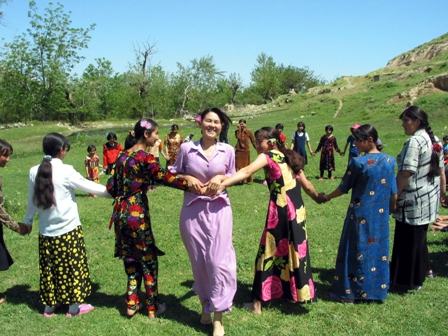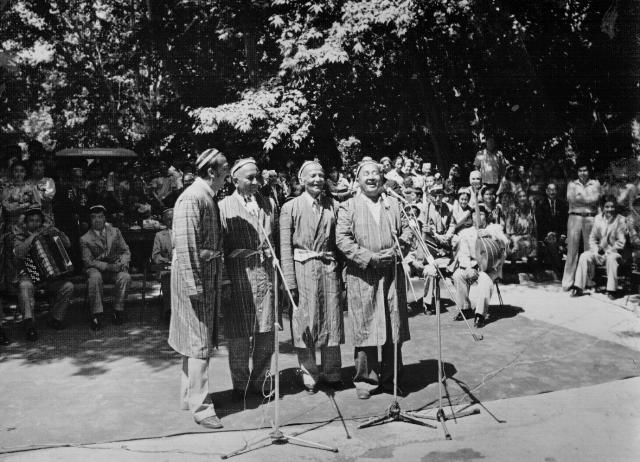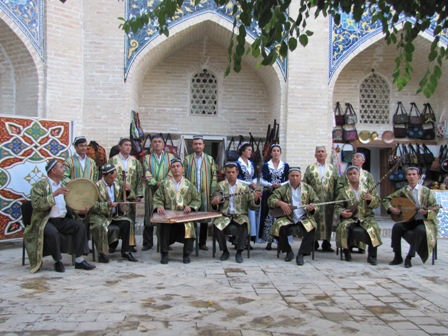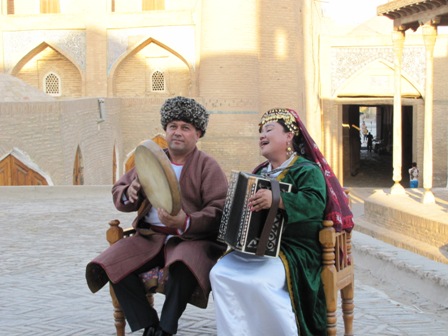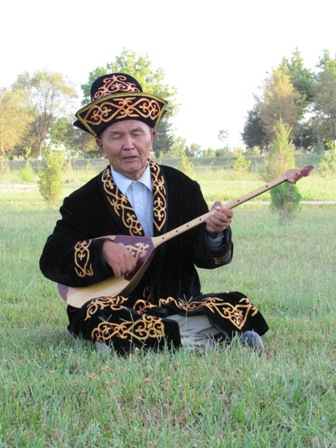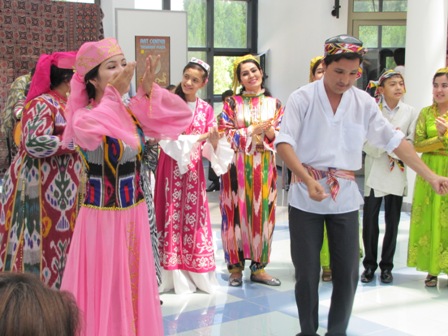Rituals of Rain Making and Wind Stopping
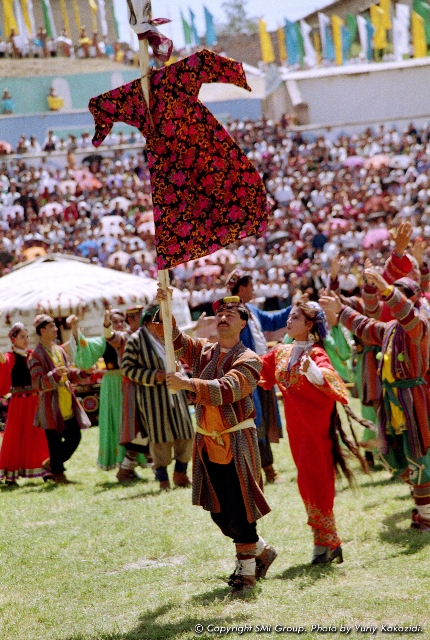
Domain: Knowledge and Practices concerning Nature and the Universe
Index Number: 04.01.01
Rain making ritual. One of the most ancient types of activities of Uzbeks was agriculture, which was represented by irrigated and dry agriculture. When in the areas, where dry agriculture was present, there was less rain in spring and consequently droughts began, the ritual of rain making was performed. This ritual was known under such names as "sust khotin", "sut khotin", "suv khotin", "сhala khotin".
Although the rituals, associated with rain making, had different names, in practice their functions were the same.
It bears mentioning that rituals and customs, related to water, have ancient roots. For some researchers, these are associated with Anahita, the goddess of earth, water and fertility as mentioned in the holy book of "Avesta" (in Zoroastrianism). For other researchers, these are associated with Zoroastrian deity of rain, Tishtria.
The ritual of "sust khotin" was conducted with participation of women in some villages of Jizzakh, Kashkadarya, Surkhandarya and Namangan regions of Uzbekistan. In contrast, in Shurchi and Kasan districts main participants were men. In accordance with the ritual, at a certain time 10-15 women put a dress of an elderly woman on a specially created dummy. Then, one of the women carried it, while the rest followed her. This procession visited each house in a village by singing a song of "sust khotin". This was followed by watering of the participants of the procession by a hostess of the house and giving out presents.
In Chust district of Namangan region this ritual was conducted on Wednesday, because it was considered to be the most fortunate day of week. First of all, a sacrifice was made ("is chiqarish") in the name of departed spirits. In addition, chozma (flat breads, fried in oil) and pilaw were prepared. Whenever it was possible more children were attracted to the participation in the ritual because people believed that children's prayers will be accepted since they are sinless. Also, in the Ferghana Valley there was a popular belief, according to which it was possible to make rain by turning tortoise on its back.
Rituals related to rain making, which represent ideas about natural phenomena, have been preserved to our days in a slightly modified form, and represent a combination of religious views and traditions.
Wind stopping ritual. When there was a strong wind, which persisted for several days, Uzbeks carried out a special ritual called "Choy momo". This ritual was meant to stop strong winds. It was widely practiced by Uzbeks living in South of Kazakhstan, specifically in the nearby areas of Turkestan, Sayram and Chimkent.
"Choy momo" is phonetically modified form of the word "chal momo". Among ancient Turkic people the word "chal" was also used in the meaning of "wind". So, the word "chal momo" meant "grandmother wind".
Often, it was exactly during ripening of grain crops that strong winds caused a serious damage to the harvest. And in order to protect it a ritual of "Choy momo" was carried out by women during day time. At the beginning of the ritual two elderly women from a village or mahalla, having smeared their faces with soot, wearing old clothes, and holding sticks in their hands, walked around the village and sang the song of "Choy momo". The elderly women were usually accompanied by five girls, whose heads were covered with red capes, and a boy of 7-8 years old, who sat on a donkey that carried a large khurjun (saddle-bag). Consequently, the villagers gave presents (wheat, eggs, bread, money, etc.) to the participants. At the end of the ritual all residents of the village gathered at a certain place, and made a sacrifice in honor of Shamol ota, the patron of wind.
Interestingly, in Turkestan the ritual of "Choy momo" was carried out by two men (not women), who put cone-shaped hats (or turbans) on their heads and smeared their faces with soot. Nowadays this ritual is almost not practiced in daily life of the people and remained only in the literature dedicated to folklore studies.





